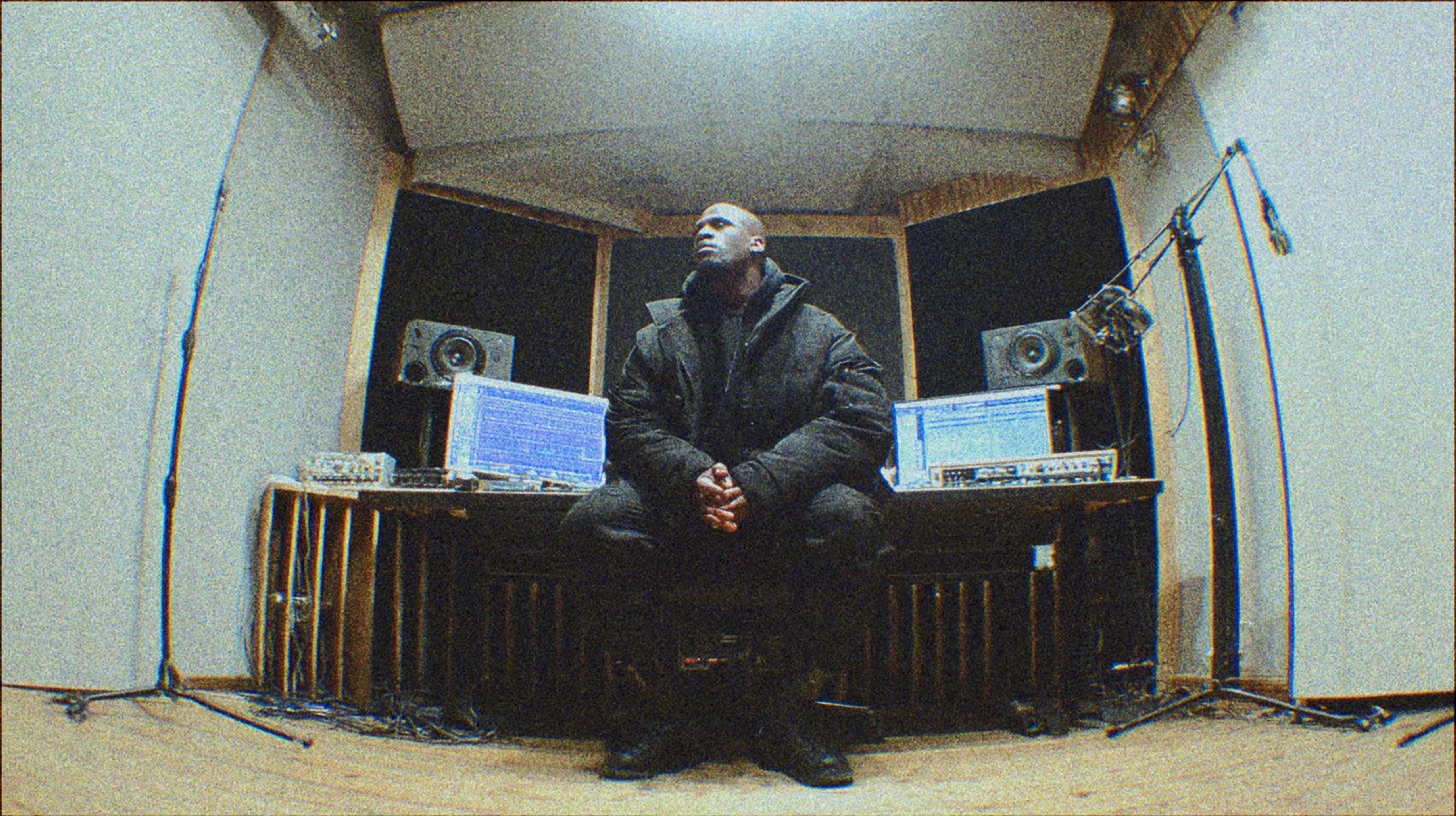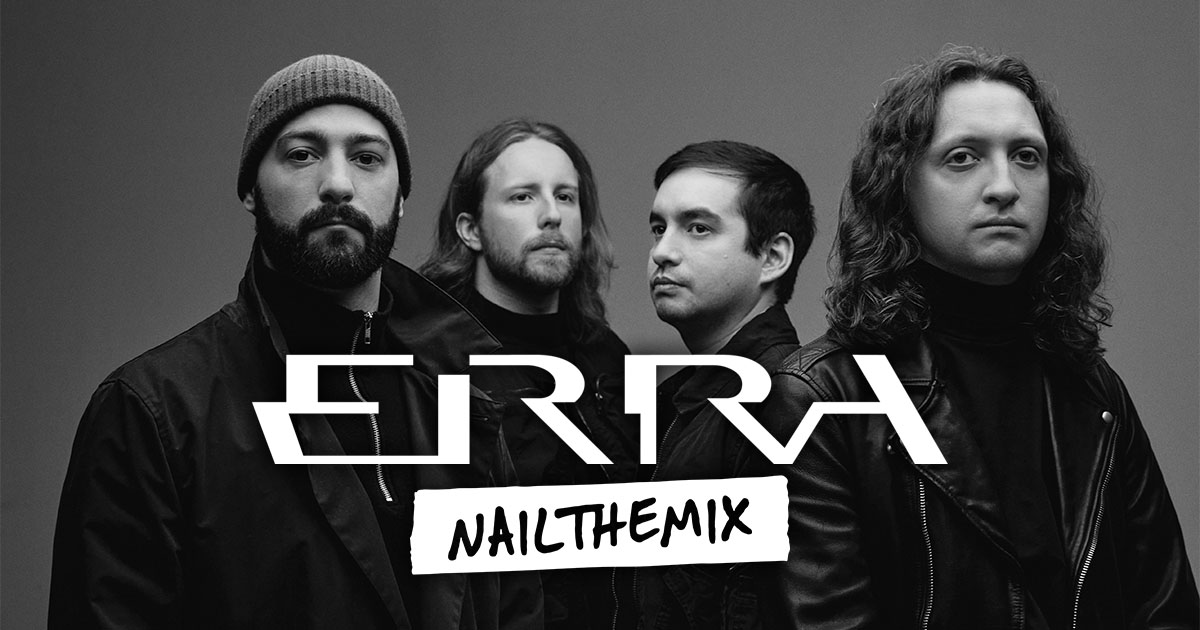
Audio Production: The Modern Metal Musician’s Essential Toolkit
Nail The Mix Staff
Being a metal musician in 2025 and beyond? It’s a whole different beast than it was back in the day. The internet hasn't just changed how people find metal; it's completely reshaped what it means to be a metal artist. Gone are the days of solely relying on landing a massive record deal or waiting for a producer to magically understand your vision.
Today, it's about self-sufficiency. It's about taking control. And a massive part of that control? Audio production.
Yeah, you heard that right. Knowing your way around a DAW, understanding how to capture killer tones, and making your tracks punch hard is no longer a "nice-to-have" – it's pretty much essential. As Eyal Levi often points out, the internet and affordable recording technology have democratized music creation. Metal, inherently an underground, extreme art form, can now reach its dedicated audience directly. But to stand out and make an impact, your audio has to be on point. This isn't just about your EPs and albums; it's about the audio for your YouTube playthroughs, your Twitch streams, your TikTok clips – everything.
Why Audio Production is No Longer Optional for Metalheads
Think the "glory days" of stadium rock and million-selling physical albums are the only path to success? Think again. The landscape has shifted, and for the better, if you're willing to adapt.
The DIY Revolution: Your Bedroom is the New Studio A
Remember when getting a "pro" recording meant saving up thousands to book time in a massive studio, often with an engineer who didn't get metal? Those days are fading fast. The barrier to entry for high-quality audio production has been obliterated.
- Affordable Gear That Slays: Interfaces like the Focusrite Scarlett 2i2, PreSonus Studio 24c, or even a Universal Audio Volt can give you pristine recordings for a few hundred bucks. These aren't the janky, low-fi boxes of the early home recording days; we're talking near top-tier quality.
- DAW Powerhouses: Whether you're a Reaper fanatic (hello, customizability!), a Pro Tools diehard, or you vibe with Cubase or Logic Pro X, the power at your fingertips is insane. These platforms, even their more affordable versions, pack features that were unimaginable in multi-million dollar studios not too long ago.
- Your Vision, Undiluted: The most crucial part? You get to bring your vision to life, directly. No more trying to explain to a producer why that specific dissonant harmony or blast beat pattern is essential. You can craft it yourself, ensuring your artistic intent remains pure.
Beyond the Album: Audio for the Content Age
Being a modern metal musician often means being a content creator. Your music is the core, but it's surrounded by playthrough videos, gear demos, behind-the-scenes vlogs, and live streams. And guess what? If the audio on that content sucks, people will click away, no matter how sick your riffs are.
- Content is King (and Audio is its Crown): Think about it. A killer guitar playthrough with muddy, badly mixed audio? Unwatchable. A Twitch stream where your mic sounds like you’re talking through a tin can? Instant turn-off.
- Simple Setups, Big Impact: You don't need a million-dollar setup for content. A solid USB mic like a Rode NT-USB+ or an Audio-Technica AT2020 USB-X for speech, and a clean DI signal for instrument playthroughs (more on DIs later) can make a world of difference. The key is clean capture and some basic mixing know-how.
The "Middle Class" Musician: Discoverability and Making it Work
Eyal Levi often talks about the rise of the "middle class" musician – artists who might not be selling out stadiums but are building sustainable careers by connecting directly with their niche audience online. Your professionally produced audio is a cornerstone of this.
Great-sounding tracks grab attention on Spotify discovery playlists. Polished audio on your Bandcamp makes fans more likely to buy your music. High-quality sound on your YouTube channel keeps viewers engaged and subscribed. It all feeds into building that dedicated fanbase that can actually support your art.
Level Up Your Metal Audio Production: Key Areas to Conquer
Okay, so you’re convinced. You need to get your audio production chops up. Where do you start? Before diving into the specifics for each instrument, it’s critical to understand proper gain staging, as it forms the foundation for a clean, powerful mix. Let’s dive into some key areas, packed with actionable tips and gear mentions.
Nailing the Core: Drums That Hit Like a Sledgehammer
Metal drums need to be powerful, precise, and cut through the densest mix. While micing a full kit is an art form, many modern metal productions lean heavily on samples and triggers for consistency and punch.
- Smart Triggers & Samples: Don't think of triggers as "cheating." Think of them as tools for ultimate control. Using something like a Roland TM-2 trigger module with acoustic triggers (e.g., ddrum Red Shot Triggers) on your kick and snare, feeding into sample libraries like GetGood Drums (GGD), Slate Drums SSD 5.5, or Toontrack Superior Drummer 3, gives you instant, mix-ready sounds.
- Actionable Tip: Blend your triggered samples with your overheads and room mics. For the kick, try a Shure Beta 91A inside for click and a Beta 52A or AKG D112 MKII outside for a touch of "woof," then layer in your favorite kick sample (like a GGD "P IV" kick) for the main body and punch. Ensure they're phase-aligned!
- Editing for Impact: Tight drums are non-negotiable in most metal subgenres. Get familiar with your DAW's transient detection and quantization tools (like Pro Tools' Beat Detective or Reaper's stretch markers/dynamic splitting).
- Actionable Tip: Don't quantize 100% robotically unless that's the vibe. Often, quantizing to 80-90% strength, or manually aligning key hits (kick, snare, toms on downbeats) can retain some human feel while still delivering tightness.
Brutal Guitars: From DI to Devastation
Modern metal guitar tones are often a blend of amp modeling, IRs (Impulse Responses), and sometimes, carefully mic'd real amps. Consistency and the ability to re-amp are huge.
- DI is Your Best Friend: Always, always capture a clean DI signal. Use a quality DI box like a Radial J48, Countryman Type 85, or even the Hi-Z input on your interface if it's decent. This clean signal is your safety net and your creative playground for re-amping later.
- The Modeler/Profiler Revolution: Amps like the Kemper Profiler, Line 6 Helix, Fractal Audio Axe-Fx III, and Neural DSP Quad Cortex have changed the game. They offer incredible tones, consistency, and the ability to take your studio sounds live.
- Plugin Power: Don't sleep on amp sim plugins. Neural DSP offers a treasure trove (Archetype: Gojira, Archetype: Nolly, Fortin Nameless Suite). Others like STL Tones (Howard Benson, Will Putney), Softube Amp Room, and Positive Grid BIAS FX 2 are also killer.
- Actionable Tip (Re-amping with Neural DSP): Record your DI. Slap on Archetype: Plini. Find a preset you like, then tweak the virtual amp (e.g., "Rhythm" amp head), cab/IR (try blending a Mesa 4×12 with a Zilla Cabs IR), and stompboxes (maybe add the "OD" pedal with gain low, level high). Automate different amp settings for different sections!
- Real Amps? Classic Micing: If you're micing a real amp (like a Peavey 6505+, Mesa/Boogie Dual Rectifier, or an EVH 5150III), the Fredman technique (two Shure SM57s, one on-axis, one angled) is a classic for a reason. Combining an SM57 with a ribbon mic like a Royer R-121 is another popular choice for a fuller sound.
Carving with EQ: More Than Just Scooping Mids
EQ is where you shape that raw guitar tone into something that sits perfectly in a brutal mix. It's not just about that classic mid-scoop. For a deep dive into EQ strategies tailored for metal, check out our Carve Your Core: EQ Strategies for Mixing Modern Metal hub page.
- Taming Fizz: That nasty, harsh high-frequency sizzle (often 5kHz-10kHz, sometimes higher) can ruin a guitar tone. Use a parametric EQ like FabFilter Pro-Q 3 with a narrow Q to surgically notch out these offensive frequencies.
- High-Pass for Clarity: Muddy low-end is a common problem. High-pass your guitars, often somewhere between 80Hz and 120Hz (or even higher depending on the tuning and role), to remove unnecessary rumble and make space for the bass and kick.
- Low-Pass for Cohesion: Sometimes, especially with heavily distorted tones, guitars can have too much high-end "air" that clashes with cymbals. A gentle low-pass filter (e.g., starting around 8kHz-12kHz) can help them sit better and sound thicker.
Bass That Rumbles and Cuts
A killer metal bass tone needs both foundational low-end weight and aggressive midrange cut to be heard alongside detuned guitars and pounding drums.
- DI Dominance: Again, a clean DI signal is paramount. Many metal bass tones are entirely DI-based or heavily DI-blended.
- The Split Signal Strategy: A hugely popular technique is to split your bass DI into two (or even three) tracks:
- Lows: Heavily compress this, maybe filter out most of the highs (e.g., low-pass at 200-300Hz), and keep it solid and consistent.
- Mids/Highs (Grit): Distort this track using plugins like SansAmp emulations (e.g., Softube Bass Amp Room's "8×10" or "Dirty" models), Darkglass Ultra plugins (Neural DSP or physical pedals), or even guitar amp sims run subtly. FabFilter Saturn 2 is also amazing for adding harmonic richness. High-pass this track to remove lows already covered by the "Lows" track.
- Compression is Key: Bass guitar benefits immensely from compression to even out dynamics and maintain presence. For more on crushing your bass (and everything else) effectively, our Metal Compression Secrets: Beyond Just Making It Loud hub page is your friend.
- Actionable Tip: Try an 1176-style compressor (like the Waves CLA-76 or Arturia Comp FET-76) on the distorted bass track for aggressive clamping, and a smoother opto-style compressor (like a Waves CLA-2A or Native Instruments VC 2A) on the clean low-end track for gentle leveling.
Vocals That Command Attention
Metal vocals, whether guttural growls or soaring cleans, need to be clear, powerful, and sit right on top of the mix.
- Clean Capture: A good condenser mic (like an Aston Spirit, Rode NT1, or Warm Audio WA-87) into a clean preamp on your interface is a great starting point. For aggressive vocals, dynamic mics like the Shure SM7B (with a Cloudlifter or FetHead if needed) or an Electro-Voice RE20 are industry standards.
- Serial Compression: Instead of one compressor slamming the vocal, try multiple compressors doing less work each. For example:
- First compressor (e.g., FabFilter Pro-C 2) for taming peaks with a fast attack/release.
- Second compressor (e.g., Waves CLA-76 "Bluey") for character and aggressive leveling.
- Maybe even a third for overall smoothness or bus compression.
- De-Ess and Polish: Sibilance ("sss" and "tuh" sounds) can be brutal. Use a de-esser like FabFilter Pro-DS or Waves Sibilance judiciously.
- Space and Depth: Reverbs like Valhalla VintageVerb or Relab LX480 can add epic space, while delays like Soundtoys EchoBoy or FabFilter Timeless 3 can create rhythmic interest and depth.
- Actionable Tip: Send your lead vocal to an aux track with a short slap-back delay (e.g., 80-150ms, no feedback, filtered highs and lows) tucked quietly underneath. This can add thickness without washing out the vocal.
Embracing the Tech: Don't Get Left in the Dust
Some folks get hung up on "old school" methods or fear new technology. But as Eyal often says, if you're not keeping up, you're getting left behind. The truth is, many of those "all-natural" sounding records people love are often heavily processed with modern tools.
- Modern Tools = Better Results: Vocal tuning software like Melodyne or Antares Auto-Tune Pro (used tastefully, or as an effect) is standard. Drum replacement/enhancement with Slate Trigger 2 or the sampler in Superior Drummer 3 is commonplace. These tools, when used well, elevate the final product.
- Workflow is Everything: Learn your DAW inside out. Keyboard shortcuts, templates, track organization – these things save massive amounts of time and let you focus on creativity.
- Eyal shared a killer example: using a kick drum trigger pad in the studio. Drummers can focus their energy on a powerful hand performance (cymbals, snare, toms) without worrying about slight inconsistencies in kick velocity or bleed into other mics, especially if you're going to sample-replace the kick anyway. It leads to cleaner recordings and often better overall performances. Another game-changer was adopting the Kemper Profiling Amp early on. It solved issues with tone consistency, re-amping, and allowed bands to take their exact album tones on the road.

100+ Insanely Detailed Mixing Tutorials
We leave absolutely nothing out, showing you every single step
The Nail The Mix Advantage: Learn from the Pros Who Live This
Feeling a bit overwhelmed? That’s natural. Mastering audio production is a journey. But what if you could shortcut years of trial and error by learning directly from the producers who’ve mixed a ton of your favorite metal albums?
That's where Nail The Mix comes in.
We believe that the best way to learn is by doing, and by seeing exactly how world-class producers get those massive, polished, and brutal sounds.
- Real Sessions, Real Pros: Every month, you get the actual multi-tracks from a killer metal song and watch the original producer mix it from scratch, live, explaining every plugin choice, every EQ move, every automation trick. We're talking sessions with bands like Gojira, Meshuggah, Periphery, and Lamb of God, mixed by legends like Jens Bogren, Will Putney, Forrester Savell, and Adam "Nolly" Getgood.
- Actionable Knowledge: This isn't just theory. You see the settings, hear the before-and-after, and understand the why behind their decisions.
- Community and Growth: Join a supportive community of like-minded metal producers, share your mixes for feedback, and push your skills to the next level.
Ready to stop guessing and start getting pro-level results from your home studio? If you're serious about taking control of your sound and truly unlocking what's possible with modern metal audio production, then it’s time to Unlock Your Sound: Mixing Modern Metal Beyond Presets with Nail The Mix.
You've Got This
It truly is an incredible time to be a metal musician. The tools are more affordable and powerful than ever. The knowledge is out there. The ability to connect directly with a global audience is unprecedented.
Embracing audio production isn't just about making your demos sound better; it's about taking full ownership of your artistic vision, from the first riff written to the final mastered track, and all the content in between. It's about self-sufficiency, creativity, and the freedom to make the exact music you want to make, sounding exactly how you want it to sound.
So dive in, experiment, learn, and start crafting those killer metal tracks. Your sonic arsenal awaits.
Get a new set of multi-tracks every month from a world-class artist, a livestream with the producer who mixed it, 100+ tutorials, our exclusive plugins and more
Get Started for $1





